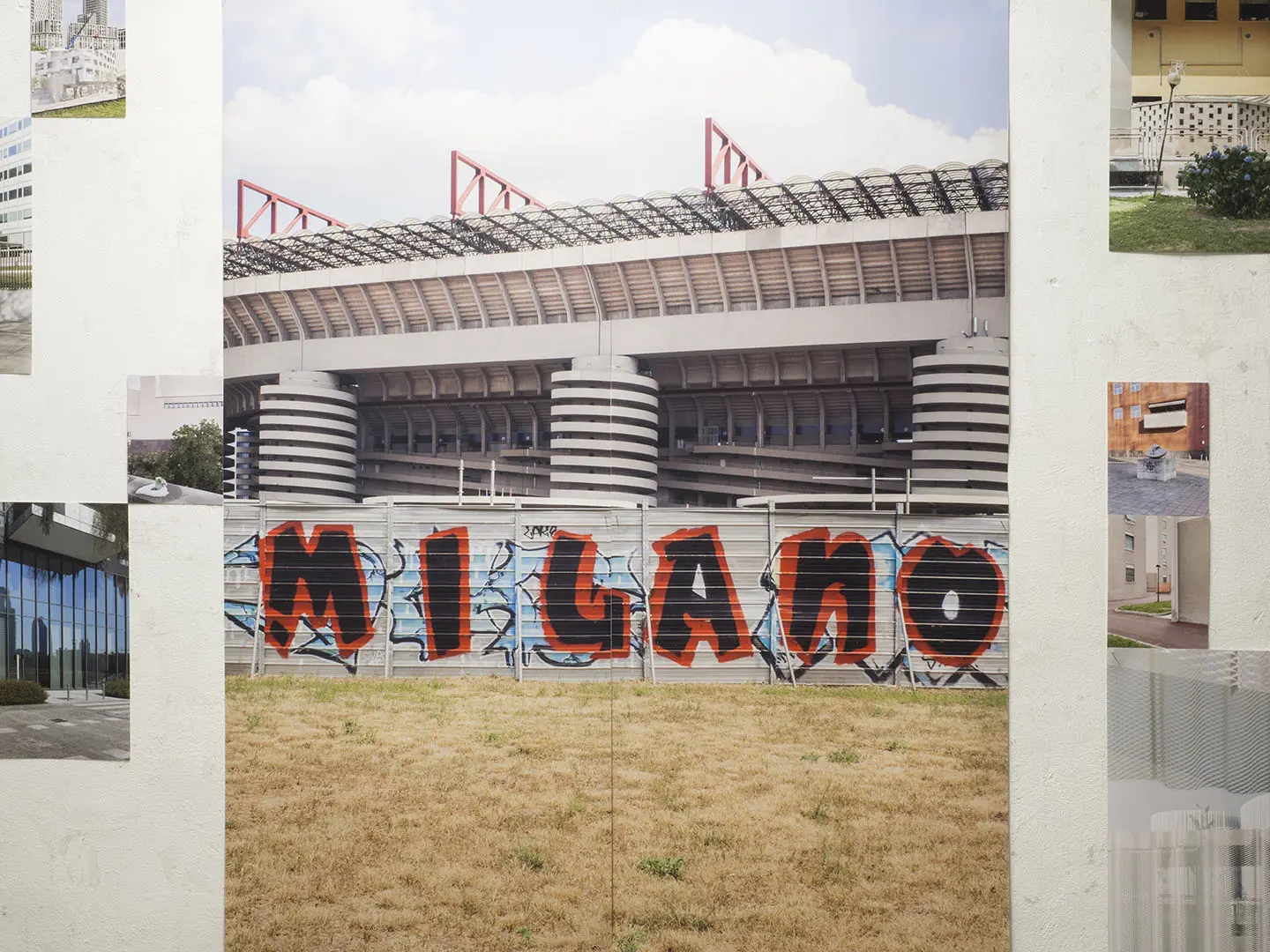In partnership with MiCodmc, a selection of establishments ripe for discovery during the 63rd edition of the Salone del Mobile.Milano, from 8th to 13th April
Giovanna Silva: “Milan. City, I Listen to your Heart”. Triennale Milano

Giovanna Silva Exhibition at Triennale Milano, Ph. Giacomo Bianco
Until 12th December, the Brutalist stairway of the Triennale Museum in Milan is playing host to around one thousand images shot by the photographer Giovanna Silva, making up a portrait unlike any other of the city of Milan, which is surfacing from a period unlike any other.
The installation for this exhibition is substance and intention: we are greeted by a proliferation of photographs printed and tacked to the wall according to a non-hierarchical, initially disorderly-seeming criterion, a rhizome of images in a cramped, tortuous space, clinging to the existing (and fascinating) architecture. Some are only visible from a certain height, while others are partially illegible, masked by a series of pipes. In any event, we are left to assume that the crowded display chimes with the concept behind the installation – allowing the eye to rove and halt when it is caught by something or to concentrate on the display as a whole rather than an individual piece. It soon becomes clear that, apart from the provenance indicated in the title, these images bear other recurring characteristics. They describe an empty city, devoid of people, making for a post-Holocaust effect. Cropped fragments, sections. They make for a mnemonic distinction – anyone living in Milan would instantly recognise the architectural modules of Giò Ponti or Caccia Dominioni, Arengario’s stairs or the pathways at the Monumental Cemetery from the slightest hint, with no need for the image in its entirety. Anyone not familiar with the city might take a more formal view of the exhibition, less sentimental or engaged with regard to the game of recognition that unleashes a series of private memories.

Giovanna Silva Exhibition at Triennale Milano, Ph Giacomo Bianco
We are told that these photographs were taken during the course of a year, early in the morning, but the year is not specified. It’s impossible not to compare the deserted, depopulated city, the shuttered shops and the empty streets with the year of the pandemic and lockdown and the ensuing seismic redrawing of our relationship with the spaces, with the emptiness, the vacuum, of the urban space, the overall thinning of our intrapersonal relationships. In Giovanna Silva’s Milan, the heart into which the photographer is tuned into could be classed as one of those signs of life that, rare and often merely allusive, pop up in the desert – a feeling we all remember from our months of confinement. The famous omenoni [colossus] that support the façade of the house of the same name are loaded with extra intensity by the anthropomorphic features that make them stand out from the abstract modern and contemporary lines of the other buildings favoured by the photographer – while there are no flesh and blood people, at least there are some in stone! Two empty, snow-covered beer cans have been left on a balustrade, alluding to a meeting between two people; the graffiti on the walls speak to a communicative and dialogic intent despite their surreal nature ("Acab / Stop scritte / Stop vandali / Prima i muri italiani" [Acab / Stop Writing / Stop Vandals / Italian walls first]). In the desert of reality, as in the interstellar spaces, every sign is accentuated and empowered.

Giovanna Silva Exhibition at Triennale Milano, Ph Giacomo Bianco
While this brief reading is inevitably influenced by recent events, another a-historic intention can be discerned in the collection: the compulsive idea of a catalogue of forms through which a city manifests itself – and a specific city, Milan. Another interpretation of its “heart” takes us back to the vaguely initiatory nature of the exhibition. If only those who are Milanese by residency or frequentation would be able to recognise places and buildings from small glimpses and details, and if it is true that the exhibition, with its rhizomatic and roving approach, gives off an impression of general harmony, then it is obvious that identity-forming characteristics of an urban space do exist – over and above social, anthropical ones and so on – and are strictly architecture-related, with the solutions of the great local architects and the common vulgarisations, marking out a place with the shapes, the rhythms, the materials and the forms that become familiar. These features are born of human intention and live on to bear witness even when Man disappears from the scene, if only momentarily.


 Salone Selection
Salone Selection



















